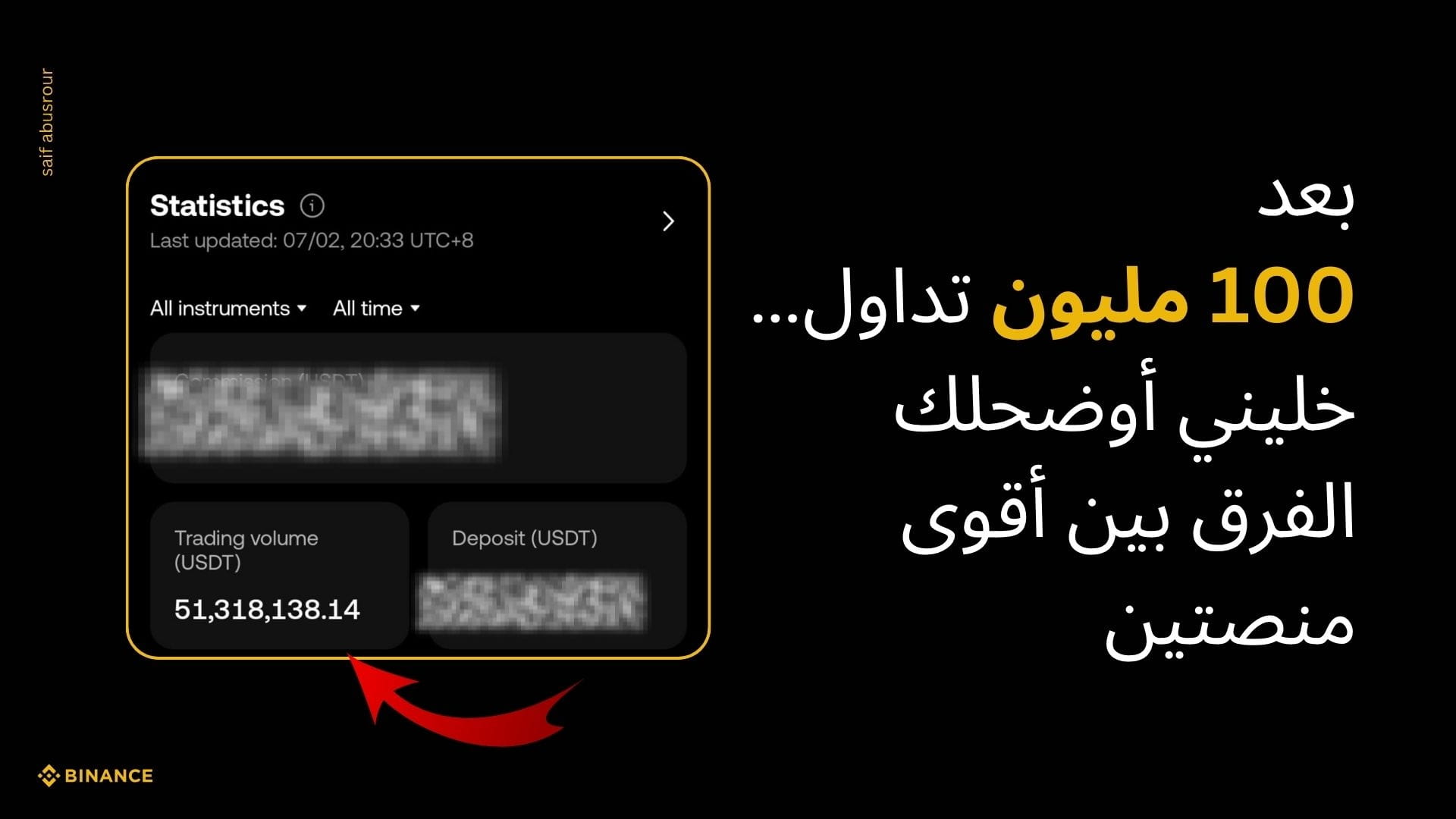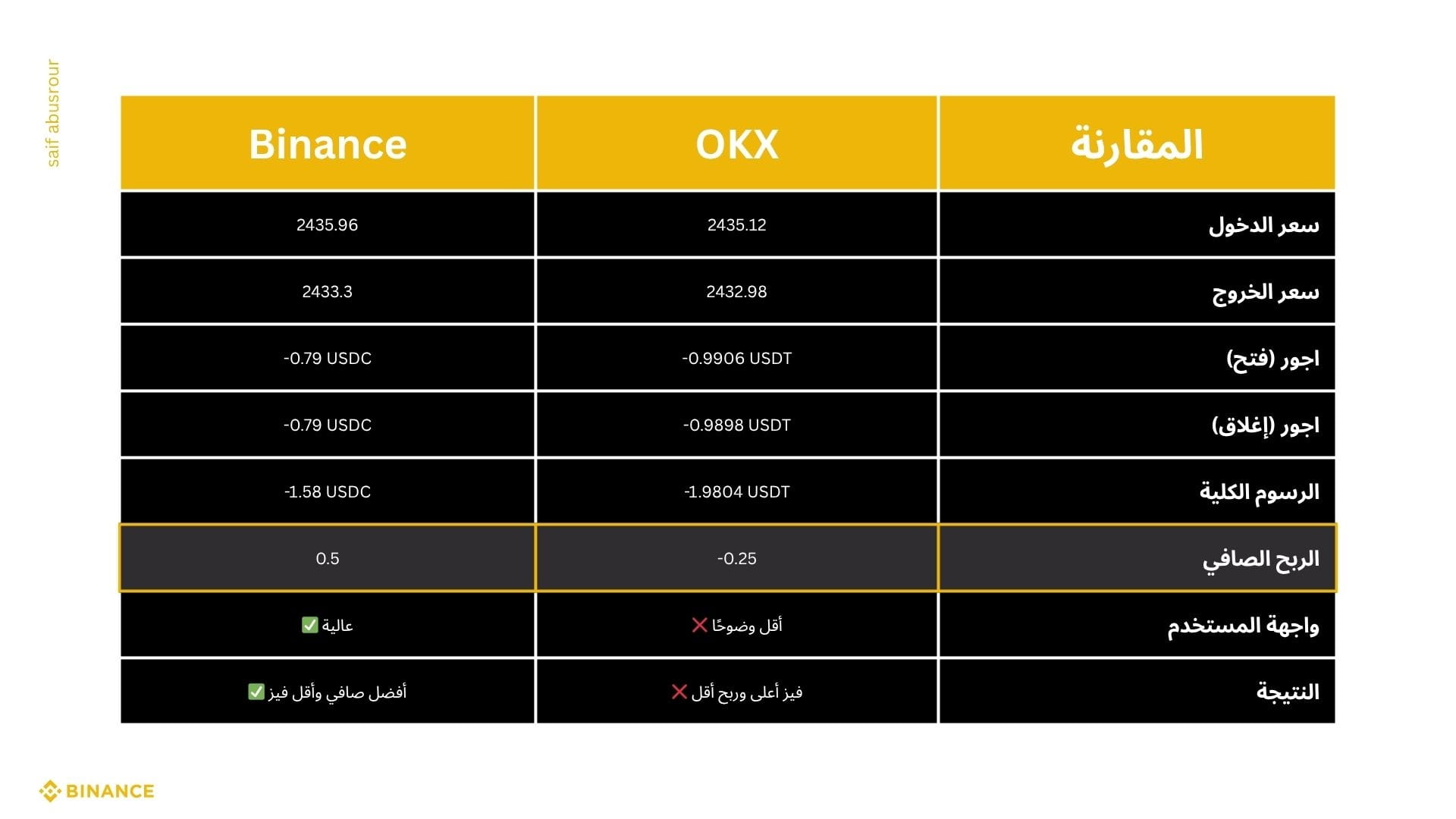
After executing trades exceeding 100 million dollars across various platforms, I now see each platform not only as a financial intermediary but as a system with its own "fingerprint" in handling capital, execution mechanisms, data presentation, and fee structure. These differences do not appear on the surface and are not taught in educational videos; they are discovered only through actual experience at a large scale of trading.
In a critical test, I opened a short position on ETH/USDT with 100x leverage and approximately $2000 on OKX. The profit seemed clear theoretically, but upon scrutiny, I discovered that the total entry and exit fees swallowed all the gain and I ended up with a loss of 0.25 USDT. The fault was not in the market direction, but in the pricing and execution mechanism that turned a winning trade into a burden.

I executed a short trade on the OKX platform with 100x leverage on the ETH/USDT pair, with an approximate value of $2000. I entered the trade at 2435.12 and closed it at 2432.98, which should theoretically yield a profit. In reality? The result was +1.75 USDT before deducting fees. But when you break down the numbers:
The fees for opening the trade were -0.9906 USDT
The fees for closing were -0.9897 USDT
And the final result: -1.9804 USDT in fees
This actually means that the profit was only nominal.
The real profit/loss after deducting fees = -0.25 USDT
Simply put, I entered a winning trade and exited with a loss due to fees.
The loss wasn't from the market... the loss was from the platform itself.
I literally repeated the experiment on Binance, executing the same sell trade with 100x leverage on the ETH/USDT pair, with an approximate value of $2000.
The entry was at 2435.96, and the exit was at 2433.30.
The initial result was +2.17 USDC in apparent profit.
But after deducting the fees:
Entry Fees: -0.79 USDC
Exit Fees: -0.79 USDC
Total: -1.58 USDC
Thus, the actual net profit = 0.51 USDC
Although the price movement was limited, Binance provided me with actual profit after fees.
This means that the fine differences in execution and trading costs were in my favor.
In short? Same trade – same timing – same market...
The difference is: OKX lost me money, Binance made me money.

I later extended my evaluation of the trading platforms Binance and OKX, so that the comparison would not be limited to fees but would also include a range of fundamental factors that directly affect the performance of professional traders and institutions. Among the most prominent of these factors: technical analysis interface (Charting Tools), data integration via API interfaces, P2P liquidity, the diversity of available digital assets, in addition to the fee structure and maximum leverage. The Binance platform is more diverse in terms of the number of currencies and market liquidity (P2P), making it suitable for users looking to trade low-value assets or transfer funds quickly. In contrast, OKX offers more advanced technical analysis tools and a technical environment suitable for institutions that rely on big data extraction and integration with independent trading systems. Through this detailed comparison, the essential differences that distinguish each platform from the other can be understood, which helps in choosing the most suitable platform according to the type of strategy and trading style.

The important part of the story is the realization that apparent profit does not equal real profit, and commissions can turn a successful trade into a minefield. Being aware of the fine details—from order book updates in fractions of a second to the arrangement of liquidity providers and discount priorities—is what separates the professional from the amateur. These hidden details can change the outcome of an individual trade.
#Write2Earn



